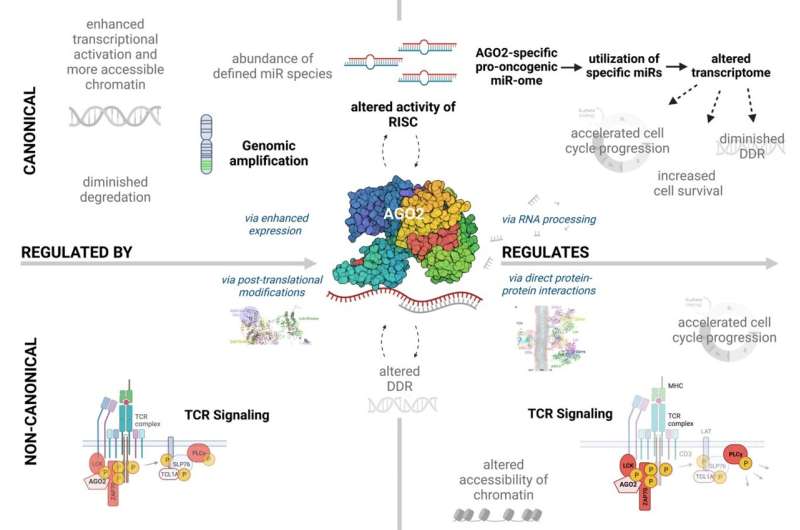This article has been reviewed according to Science X's editorial process and policies. Editors have highlighted the following attributes while ensuring the content's credibility:
fact-checked
peer-reviewed publication
proofread
AGO2 in T-prolymphocytic leukemia (T-PLL)

A new editorial paper titled "AGO2 in T-prolymphocytic leukemia: its canonical and noncanonical deregulation and function" has been published in Oncotarget.
In their new editorial, researchers Till Braun, Hanna Klepzig and Marco Herling from University of Cologne and University of Leipzig discuss T-prolymphocytic leukemia (T-PLL)—a mature T-cell neoplasm with an aggressive and treatment-refractory course, stating, "In light of limited therapeutic options, median overall survival times from diagnosis is hardly longer than 2 years."
There is currently no FDA- or EMA-approved drug for the treatment of T-PLL. Although 80–90% of patients experience a response to the most efficient single agent Alemtuzumab, relapses are common within the first 12–24 months following this first-line treatment. One of the defining characteristics of T-PLL is the presence of the chromosomal aberrations inv(14) or t(14;14), which lead to constitutive expression of the proto-oncogene T-cell leukemia 1A (TCL1A).
This adapter molecule is centrally implicated in the enhanced T-cell receptor (TCR) signaling that is observed in the memorytype malignant T-cell. Other recurrent genomic alterations that have been identified in T-PLL affect the genes ataxia telangiectasia mutated (ATM), Janus kinase (JAK), signal transducer and activator of transcription (STAT), and MYC. In a recent study published by Braun et al., the team made significant advances in the understanding of the biology of T-PLL at the level of post-transcriptional gene regulation.
"For the first time, descriptive and mechanistic data implicated the involvement of molecules of the RNA interference (RNAi) machinery in T-PLL's leukemogenesis and by that refined our current disease model by concepts beyond protein-coding genes," the researchers conclude.
More information: Till Braun et al, AGO2 in T-prolymphocytic leukemia: its canonical and non-canonical deregulation and function, Oncotarget (2023). DOI: 10.18632/oncotarget.28378



















